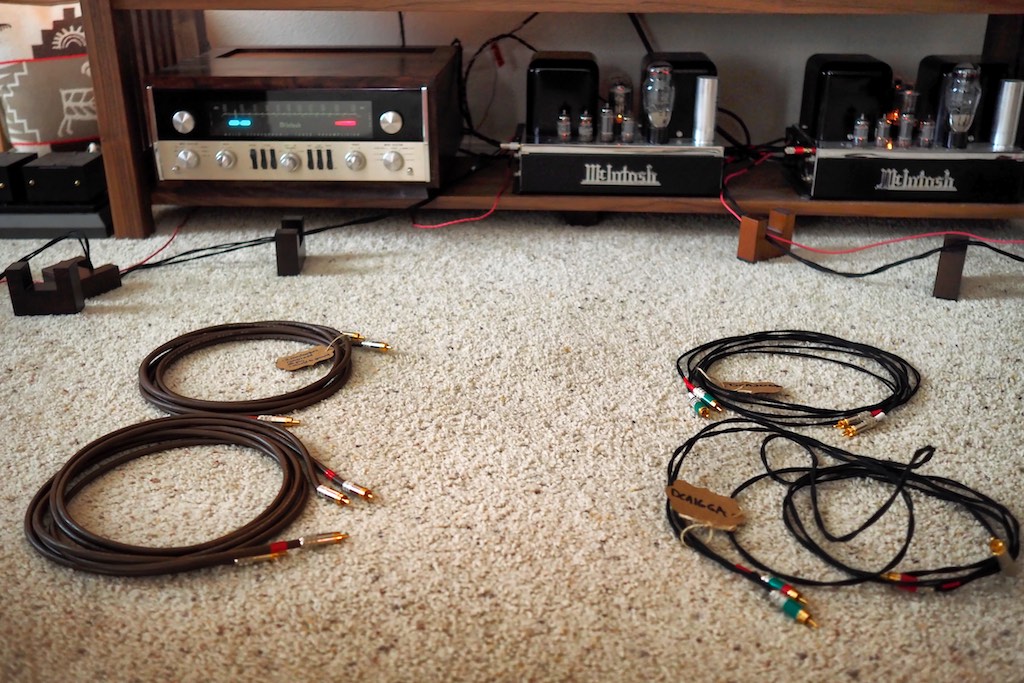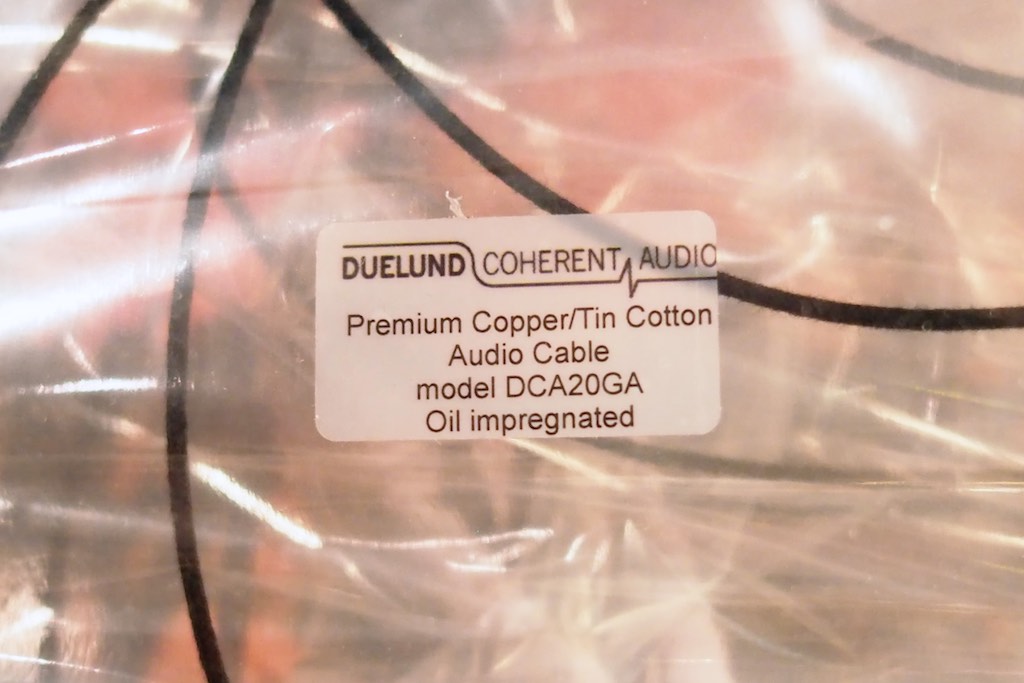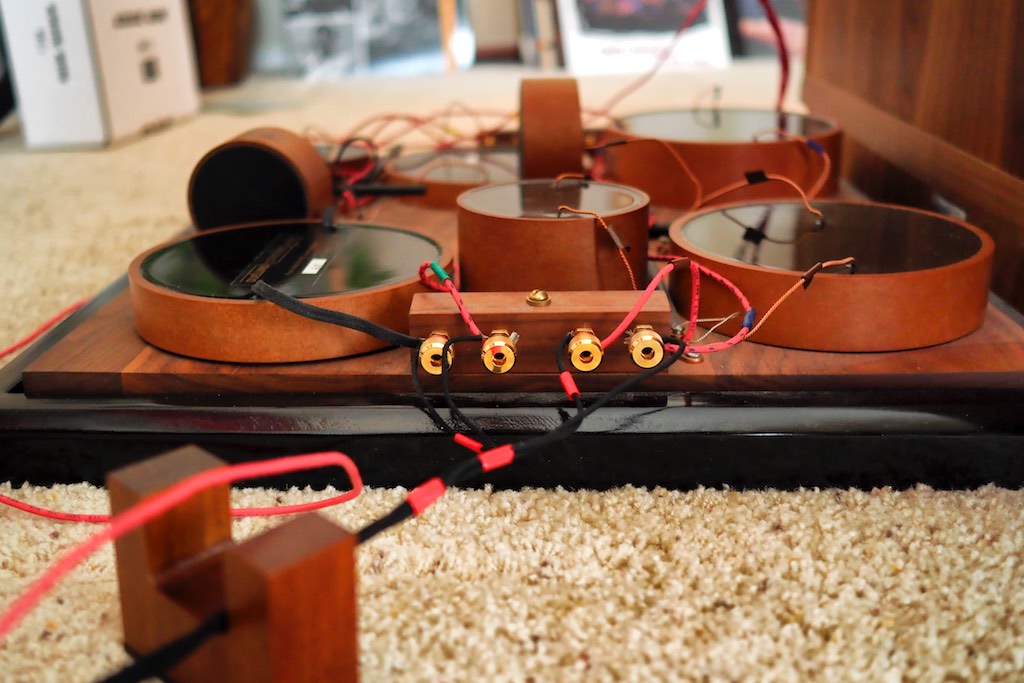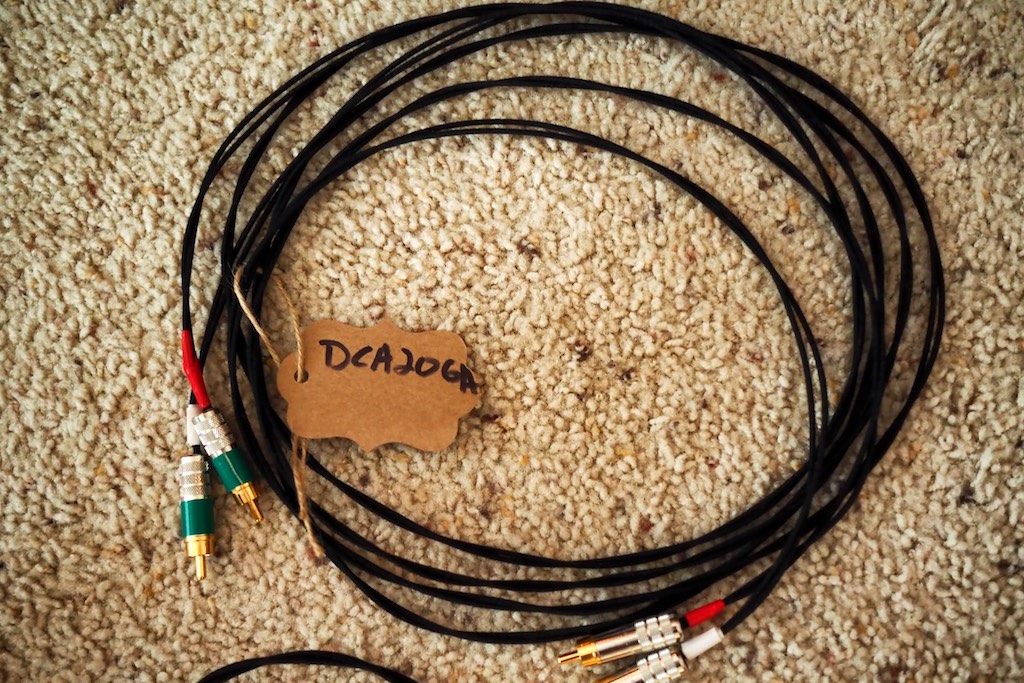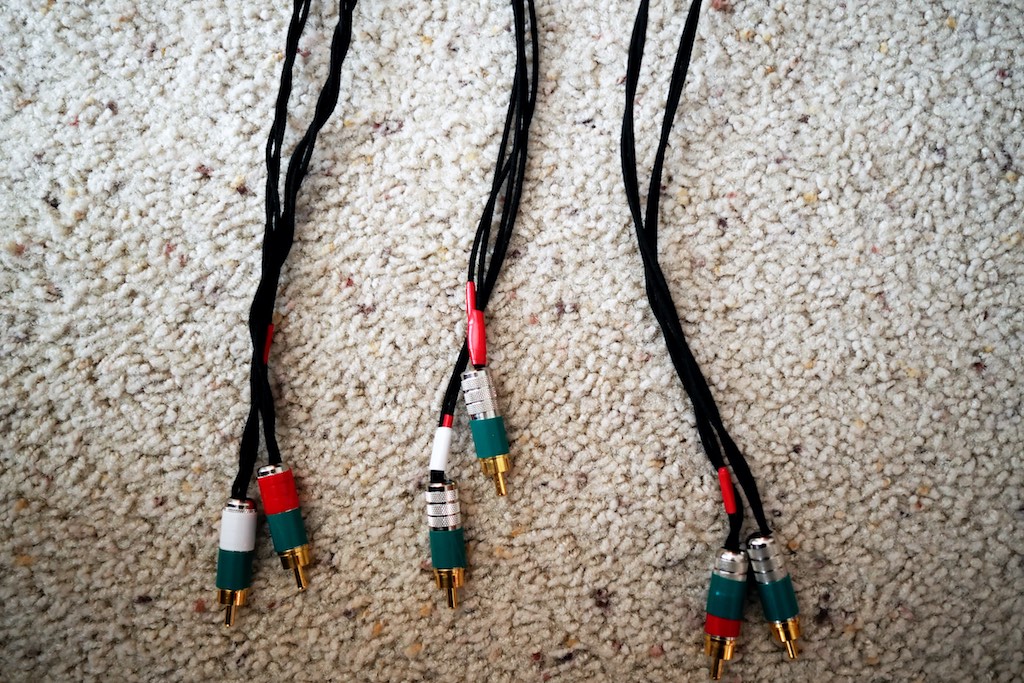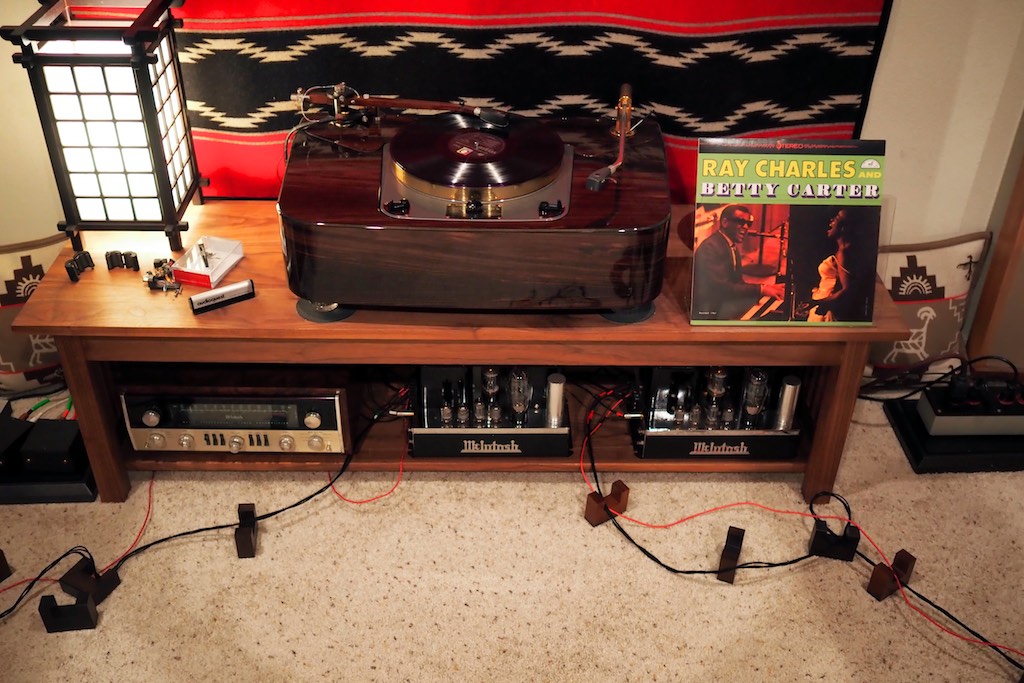This weekend I'm hoping to get in some more listening time with the various wire adventures I've got cooking, so hopefully I can share some more listening impressions with you before too long.
It's already shaping up to be a busy weekend, but hopefully I'll be able to get some writing in for you.
Keep checking in on this post over the next few days and I'll add updates to it as I can.
As I reported earlier, I made up a 2-meter set of Duelund speaker cables for my Westminster Royal SE loudspeakers that consist of Duelund DCA20GA tinned-copper tone-wire for the high-frequencies, and Duelund DCA16GA tinned-copper tone-wire for the low-frequencies.
I really liked what I was hearing when using the Duelund DCA16GA tinned-copper tone-wire for speaker cables with my Westminster's. The DCA16GA was even better sounding and more musical than my Western Electric WE16GA as speaker cables, and has replaced them, which is saying a lot!
Adding dedicated high-frequency cables of Duelund DCA20GA tinned-copper tone-wire really made a nice difference in the high-frequency presentation of my Westminster's.
In the photo above you can see the Duelund DCA20GA connected to the left (HF) binding posts of the outboard Duelund CAST crossovers of my Westminster's, and on the right (LF) binding posts is the Duelund DCA16GA, which makes for a very complimentary speaker cable combination.
The red wire you see on the left with the Acoustic Revive cable lift is the vintage Western Electric WE16GA wire that I use to connect the Westminster's driver ground to the ground on my vintage McIntosh MC30 monaural amplifier.
The red wire you see in the crossover is also vintage Western Electric WE16GA, which was my Tone Wire King until the Duelund DCA16GA showed up and bested it.
I'm so impressed with the Duelund DCA20GA for the high-frequency speaker cables on my Westminster's, that first chance I get I'm going to replace all the Western Electric WE16GA in the HF portion of the crossovers with the Duelund DCA20GA, which I think will take my high-frequency performance to the next level.
I put my new Duelund DCA16GA/DCA20GA speaker cables on my Cable Cooker and let them condition for a couple of days, and put them back in the system last night. I played music from NPR on them in the background for a few hours to aid their settling back into the system. More about this in a bit.
As I mentioned earlier, I made up two pairs of 2-meter interconnects with the DCA20GA, the first with pair single runs of Duelund DCA20GA pin-to-pin and ground-to-ground (above), and a second pair with single runs of Duelund DCA20GA wire pin-to-pin, and two runs of DCA20GA ground-to-ground.
While I was listening to the Duelund DCA20GA interconnects in my system I conditioned the 'triplet' Duelund DCA20GA interconnects on my Cable Cooker for a couple days, and then put them back in the system for some listening, while I conditioned the two-conductor version on the Cable Cooker for a couple of days.
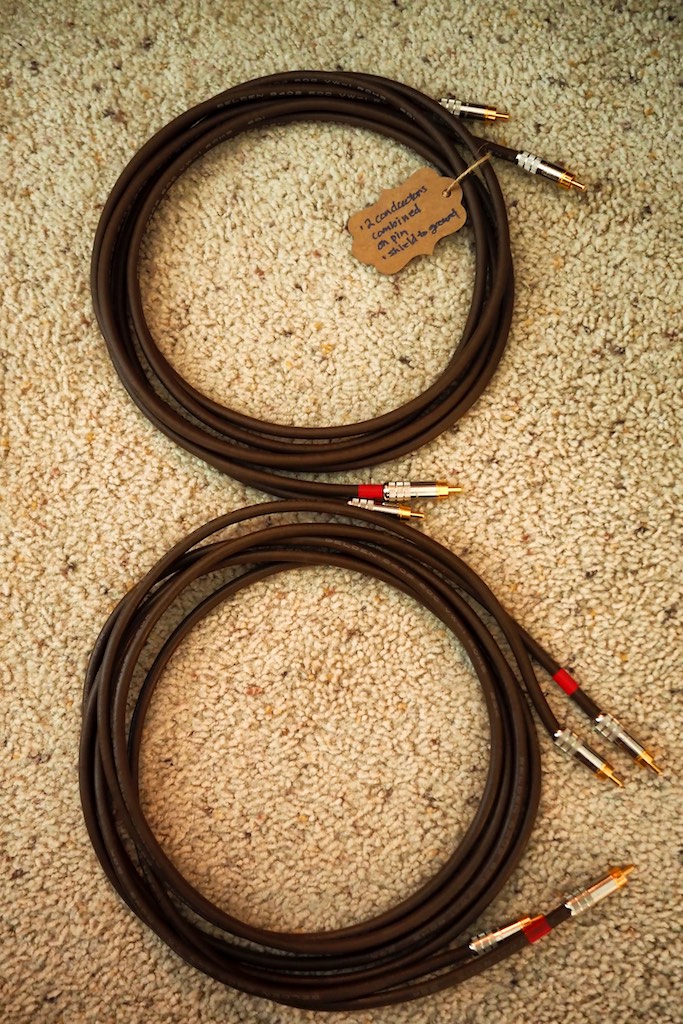
On top is the Belden 8402's connected in the method of Dominique, and on the bottom is the Belden 8402's connected in the method of Yazaki-san.
I was also intrigued by Dominique's praise for his results with the Belden 8402, which he built as a variation of Yazaki-san's method. Dominique connected the shield to ground at both ends in the method of Yazaki-san, but instead of connecting one conductor to the pin and the other to the ground, Dominique connected both of the Belden 8402's conductors to the pin, with just the shield doing ground duties.
My prediction is that the sound of the doubled conductors of the Belden 8402 on the pins of the Switchcraft 3502AAU RCA’s will be similar to the difference in performance I hear between the DCA20GA and the DCA16GA, where the additional tinned-copper in the conductor makes the sound more vivid and dramatic.
All of the interconnects have now received the same amount of conditioning on the Cable Cooker, so I'll give them a listen and report back.
Update 1, Friday evening, January 27th: The work week is done, and it's time to enjoy a Friday evening listening to music, feet up, glass of wine in hand, auditioning interconnects!
Yes, I am a nerd! 😉
It was 1997, and I was working at Congressional Research Service on a detail, when jazz enthusiast President Bill Clinton awarded Betty Carter a National Medal of Arts, which Betty considered to be one of the most important awards she received in her lifetime.
I've always loved the album Betty Carter did with Ray Charles, Ray Charles and Betty Carter, for its warm, intimate, and romantic - and occasionally comedic - vibe. Great musicians, great music, great jazz, and a whole lotta feeling - it doesn't get much better than that!
I remember reading the Washington Post in 1998 when Betty Carter passed away, and they asked President Clinton to comment about Betty. Jazz enthusiast Bill Clinton was of course saddened at the loss of Betty Carter, praising her as a musician, and her accomplished musical career.
To my delight Bill Clinton mentioned how much he loved Betty's album with Ray Charles, Ray Charles and Betty Carter, and in particular how much he loved the duet they did on the album, "Baby It's Cold Outside".
I chuckled. The context of the song "Baby It's Cold Outside" is a man trying to convince his sweetheart to stay a little longer, because it's cold outside, in hopes that a une liaison might develop. At the time the dust hadn't even settled from Bill's well publicized indiscretion with Monic Lewinsky. I chuckled again. Oh, Bill!
But I digress ... as what I wanted to tell you about is my listening impressions between the 'normal' and 'triplet' Duelund DCA20GA interconnects I made.
The 'normal' DCA20GA interconnects I made, with single runs of Duelund DCA20GA pin-to-pin and ground-to-ground (above) on their Switchcraft 3502AAU RCA’s, sound absolutely fantastic on Ray Charles and Betty Carter, after coming off my Cable Cooker for a little conditioning: well-balanced top-to-bottom frequency wise, nuanced, rich, gorgeous presentation of overtones, natural tone color, no unnatural vocal sibilance, brass sounded perfectly burnished with not even a hint of unnatural forwardness, and strings sounded rich & rosiny. Beautiful!
Then I put on the 'triplet' pair of interconnects I built, with single runs of Duelund DCA20GA wire pin-to-pin, and two runs of DCA20GA ground-to-ground, on the Switchcraft 3502AAU RCA’s.
The 'triplet' version didn't sound nearly as good. Not nearly as natural and musical. Ray's and Betty's vocals took on some unnatural sibilance, the brass became too forward and harsh, and the overall musicality was compromised.
I was a little bit amazed, as I wasn't even sure if I'd be able to hear a difference between two versions. Both were the same length (2-meters), both had the same RCA's (Switchcraft 3502AAU's), both had the same solder (Kester ’44’ rosin core), and one sounded absolutely brilliant and one sounded bad. It's amazing what adding another length of conductor on the ground run did to the sound.
I really, really, like the 'normal' version of the Duelund DCA20GA interconnects I built, they are ridiculously good, and extraordinarily fairly priced to build.
The Duelund DCA20GA is $6.75 a meter at Parts ConneXion, and the Switchcraft 3502AAU RCA’s are $3.94 each at Mouser. So, for example, you could build a one-meter pair of world-class DCA20GA interconnects for $42.76 USD, or you could really splurge and build a two-meter pair like I did for $69.76 USD.
What I recommend that you do is build both a pair of DCA16GA and DCA20GA interconnects to add to your cable stable, as it will open up a world of exciting voicing possibilities for optimizing your system's performance, and I predict you'll have a blast comparing the two, at least I did. What fun!
Ok, that's it for this cold January night, baby it's cold outside. More to come over the next few days.
As always, thanks for stopping by, and may the tone be with you!




